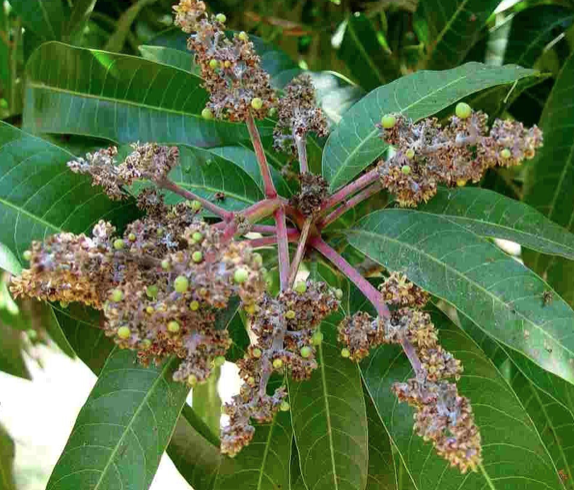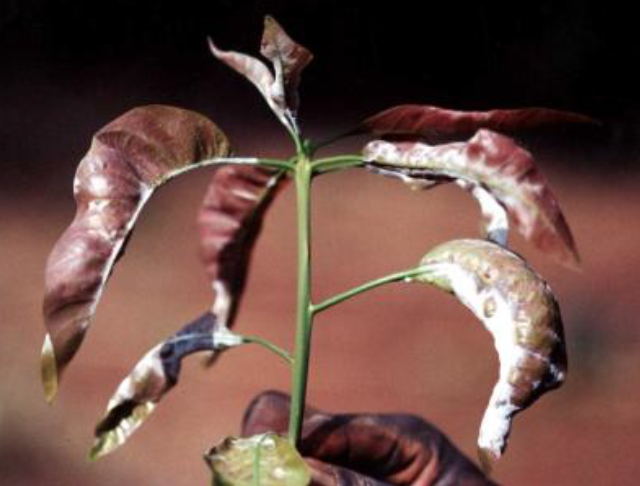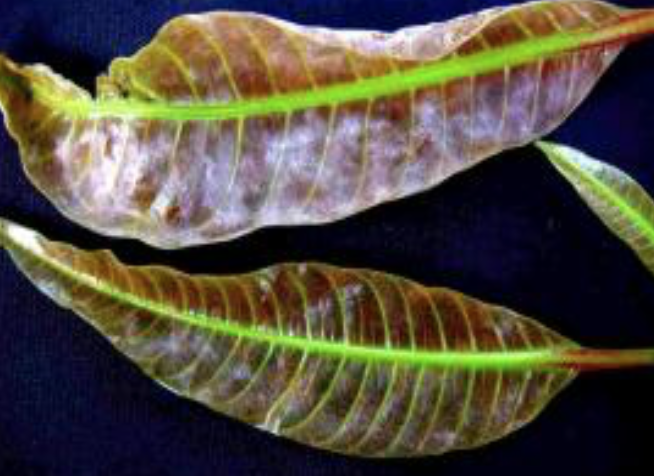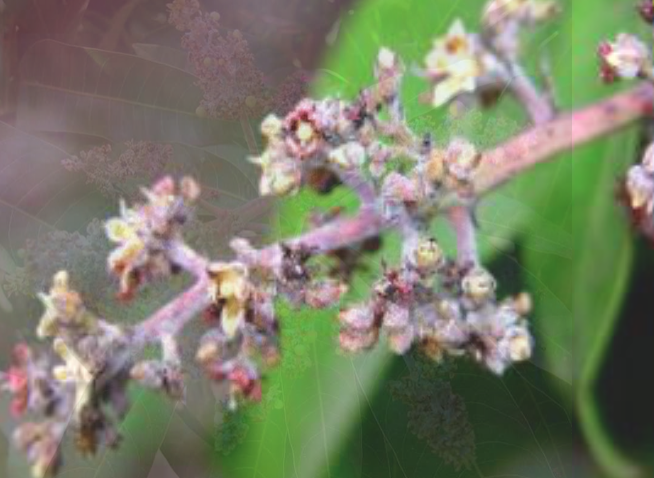Powdery mildew (Oidium mangifera)
Credit: Biovision-Infonet

A.M. Varela, A. A. Seif, icipe

(c) A. M. Varela & A.A. Seif, icipe

(c) A.A. Seif

(c) A.A. Seif
It appears as a white, powdery growth on leaves, flowers and young fruit. Infected leaves curl and flowers fail to open and drop from the tree without forming a fruit. The disease is spread by wind and can spread very rapidly. It is more prevalent in dry weather when humidity is high and nights are cool. The fungus survives from season to season in dormant buds. The flowering stage is the most critical stage for infection.
What to do:
- Consider appropriate cultivars that grow in cool, dry areas. Alphonse, “Kent” and “Zill” are highly susceptible to mildew. “Haden” and “Keitt” are moderately susceptible and Sensation and Tommy Atkins are tolerant.
- Monitor for the disease weekly.
- Spray a solution of: baking powder (6 teaspoonfuls), white oil (3 teaspoonfuls) and white bar soap foam in 15 litres of water. This solution has been shown to control powdery mildew.
- Sulphur based fungicides can effectively control powdery mildew if appropriately used.